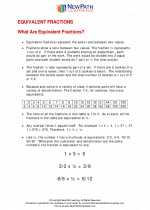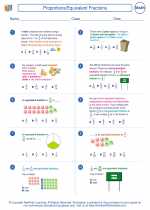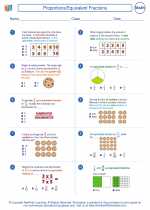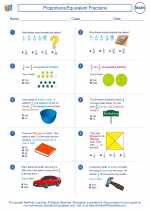Proportions/Equivalent Fractions
A proportion is a statement that two ratios are equal. In other words, when two ratios are set equal to each other, they form a proportion. Equivalent fractions are fractions that represent the same value even though they may look different. To find equivalent fractions, you can multiply or divide both the numerator and the denominator by the same number.
Example:
For example, the fractions 1/2 and 2/4 are equivalent because if you multiply the numerator and denominator of 1/2 by 2, you get 2/4. Similarly, if you divide the numerator and denominator of 2/4 by 2, you get 1/2.
Study Guide:
To work with proportions and equivalent fractions, follow these steps:
- Identify the given ratios or fractions.
- Set up the proportions by equating the two ratios.
- Cross-multiply and solve for the missing value.
- To find equivalent fractions, multiply or divide both the numerator and denominator by the same number.
Remember, proportions and equivalent fractions are important concepts in mathematics and are used in various real-life applications such as cooking, scaling drawings, and understanding financial ratios.
Practice working with proportions and equivalent fractions to strengthen your understanding of these concepts.
. Create and Print your own Math Worksheetswith Math Worksheet Generator
◂Math Worksheets and Study Guides Sixth Grade. Proportions/Equivalent Fractions

 Worksheet/Answer key
Worksheet/Answer key
 Worksheet/Answer key
Worksheet/Answer key
 Worksheet/Answer key
Worksheet/Answer key
